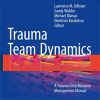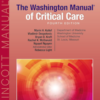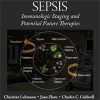How to end quiet suffering in the ICU? Identifying and treating hypoactive delirium
link.springer.comThe duration of time a person spends in hypoactive delirium predicts higher rates of death, longer length of stay, higher costs of care, and higher rates of acquired dementia in the months and years following critical illness.
The key to detecting and managing hypoactive delirium begins with awareness, timely diagnosis high compliance with preventive measures, establishing an active culture of lighter sedation or no sedation and early mobility in short, an awake and walking ICU.
A number of other alternative tools can facilitate the diagnosis of hypoactive delirium: electroencephalogram (EEG), blood biomarkers, and neuroimaging. The presence of a less integrated network in the alpha band is a characteristic feature associated with hypoactive delirium, allowing accurate differentiation from other states of consciousness.
The presence of generalized slowing on the EEG is noted as a typical finding in hypoactive delirium, distinguishing it from dementia or depression.

















